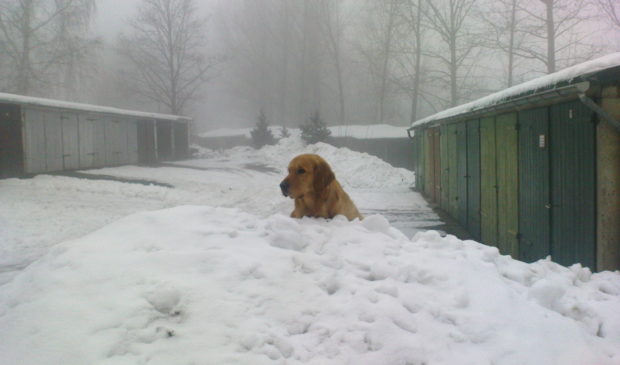Shelter logged record-setting number of animal distress calls during ‘snowmageddon’
The weeklong winter “snowmageddon” that stretched from February 16 to 21 also affected the city’s ability to respond to animal distress calls. Pounding sleet, icy roads and temperatures as low as 10 degrees in Austin made the roads dangerous for animal rescue trucks as well as staff traveling to and from the shelters. Austin 311 received 245 calls of animal neglect and reports of stray animals outdoors, but only three trucks were drivable in the freeze to initiate any emergency response.
At its March 8 meeting, the Animal Advisory Commission reviewed the challenges faced by Austin Animal Center staff coping with the rolling blackouts, dangerous driving conditions, citywide disruption in internet services and spike in neglect calls.
The meeting started out with the monthly animal services report by Deputy Chief Animal Services Officer Jason Garza and progressed to a detailed discussion about the storm response.
Austin Animal Center took in any animals it could reach, but with only three drivable trucks, the city could only respond to emergencies. The center’s trucks simply “did not have the ability to get out into the neighborhoods,” Chief Animal Services Officer Don Bland explained, adding, “It would not be frugal for us to have four-wheel drive APA trucks in Austin, Texas.”
The last snowstorm that brought comparable snow and sleet took place a decade ago, in 2011.
The 245 calls received about animal neglect set a record of 738 percent higher than last year’s 12 calls around the same time. Most neglect calls turned out to be people letting their dogs out to relieve themselves. In most cases, the dogs went right back inside afterward, Program Manager Mark Sloat said. No violations were discovered in over 100 such calls.
The staff of Austin Animal Center went above and beyond, providing 24-hour service for the animals housed in the shelter. “We had staffing that came in and actually stayed on-site from Monday through Friday, overnight. There would be as much as five staff that would stay,” Bland said.
Fortunately, the shelter did not experience any lapses in water or power and did not have to turn on the emergency backup generator.
While shelter volunteers helped walk the dogs the first day of the storm, the volunteers were asked to stay home when driving conditions turned dangerous. “For two days when everyone was asked to stay off the roads, our campus was totally closed,” Program Manager Jennifer Olohan told the Austin Monitor.
Other service calls were routed to Central Texas Veterinary Specialty and Emergency Hospital, a clinic with branches in South Austin and Round Rock. The city contracts with the facility to house the animals, Commissioner Katie Jarl told the Monitor. At some point, the clinic’s South Austin location lost power and the center made arrangements to ship its animals to the Round Rock site, Sloat said.
The rolling blackouts affected residents’ ability to report strays, and the center was unable to respond to stray dog calls. “Most people we did deal with were willing to take them into their homes until it was safe for anybody to go travel,” Sloat said. Some of the homes where people were housing pets had lost power. In some cases, shelter staff and volunteers delivered dog houses, bedding and blankets to the homes. Austin 311 also referred callers to Austin Pets Alive!, which had a supply hub when AAC ran out.
“Is anyone going to get prosecuted for having their pets out during this period or do you think that was largely a non-issue?” Commissioner Ryan Clinton wanted to know.
Bland said the Austin Police Department took in one dog, but that dog was returned to the owner because the owner was not in violation of state law, and the dog had adequate shelter.
Austin Animal Center will participate in a debrief hosted by Homeland Security and Emergency Management to see what worked, what didn’t work, and how to better prepare for future catastrophic storms so animal services can continue uninterrupted.
“We will be happy to come forward and share what we’ve learned,” Garza said.
“By and large, what we saw was most pet owners were incredibly responsible and were very concerned about their pets,” Bland said.
Photo made available through a Creative Commons Attribution 3.0 Unported license.
The Austin Monitor’s work is made possible by donations from the community. Though our reporting covers donors from time to time, we are careful to keep business and editorial efforts separate while maintaining transparency. A complete list of donors is available here, and our code of ethics is explained here.
You're a community leader
And we’re honored you look to us for serious, in-depth news. You know a strong community needs local and dedicated watchdog reporting. We’re here for you and that won’t change. Now will you take the powerful next step and support our nonprofit news organization?


